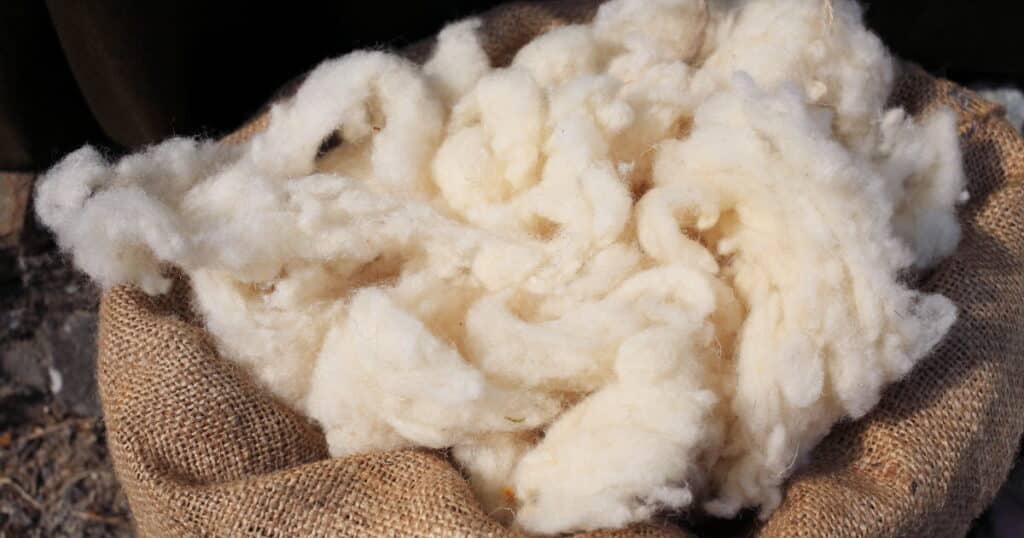Wool sweaters, wool mittens, wool hats – we all love and value wool. It’s a natural fiber with a wide variety of beneficial qualities. But maybe you wonder, where does wool come from?
Where Does Wool Come From? (Answered)
Put simply, wool comes from sheep. The only way to get sheep wool is to harvest it from a sheep by shearing the wool. Shearing is a painless process that most shepherds do once a year.
Different kinds of sheep produce different types of this natural fiber, and there are many nuances to the variations you’ll find in a sheep’s fleece.
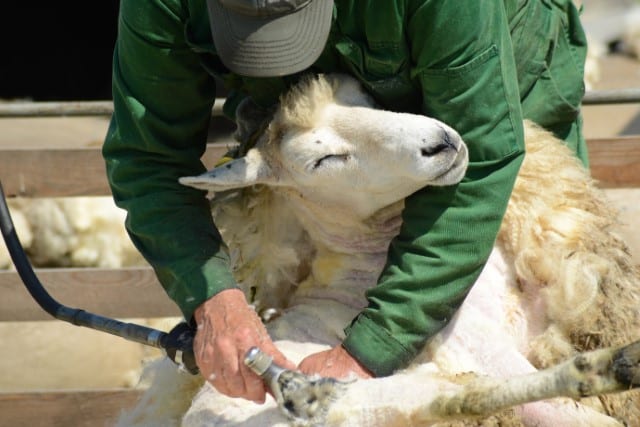
The different qualities and properties of wool determine how it is prepared for use in clothing, blankets, rugs, and more.
There are other animals that produce natural fibers that we make into textiles, too. Mohair (from goats), or the natural fibers produced by alpacas are two common examples.
In this article, however, I’ll focus on the production of good old-fashioned sheep’s wool.
Let’s start with the basics!
How Often are Sheep Shorn?
On most farms, sheep are shorn once annually. In some cases, shearing may happen twice a year.
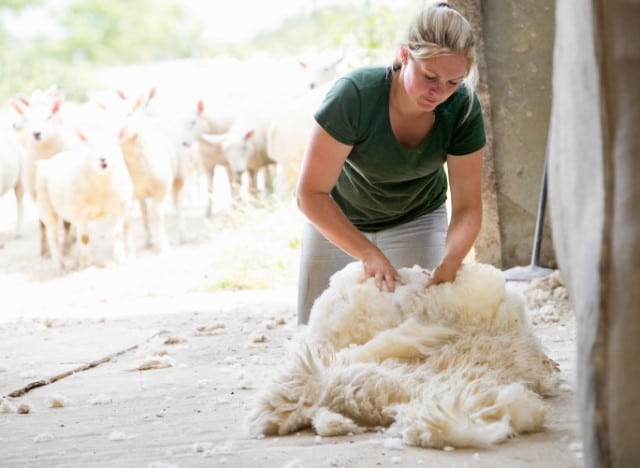
It takes the animals a full year to fully re-grow their fleece. The shearing process usually lasts around two to five minutes, depending on how skilled and efficient the shearer is.
What is Wool Made Of?
Wool is a natural fiber comprised of keratin. This is the same protein that is found in human hair.
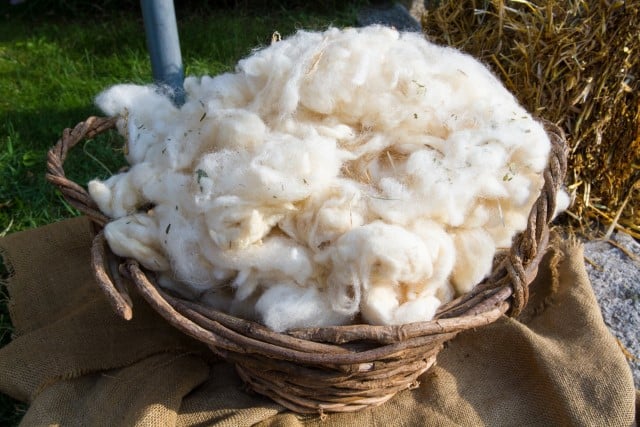
It’s such a simple fiber yet it has played a pivotal part in human history. Even today, wool is an extremely important fabric.
Cotton also plays a critical role. That fiber, however, is almost completely made of plant cellulose, and that is a key difference between cotton and wool.
As such, cotton simply cannot compete with wool when it comes to sturdiness and durability. Wool, after all, is about 97 percent protein.
These qualities make wool appropriate for several uses that cotton cannot handle.
Wool has a waviness that is referred to as “crimp.” This fiber’s crimp is key to its insulative characteristics, as bulkiness helps to trap air.
Certain kinds of wool feature more crimp than others.
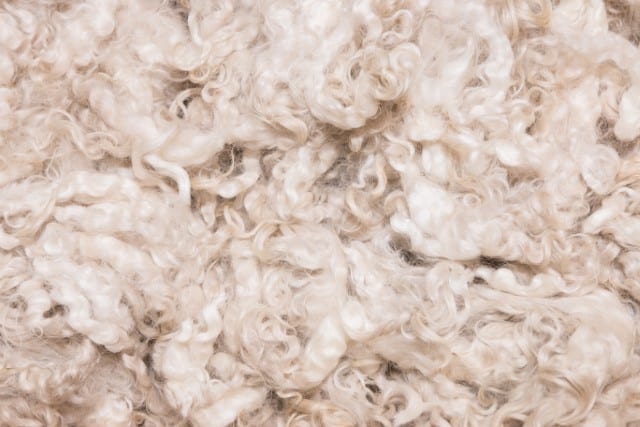
The more crimp a wool has, the more insulative it will be in a garment. In other words, the warmer it will help you stay in cold weather.
Another advantage of wool is how flame-resistant it is. When exposed to fire, wool will not spread the flame.
Rather, it will char and then self-extinguish. This characteristic means that wool is extremely desirable in uses when lack of flammability is especially sought after.
History of Wool Production Around the World
Sheep domestication was key in is development into a wool-bearing creature. Before that took place about 11,000 years ago, sheep fiber was more like hair than wool.
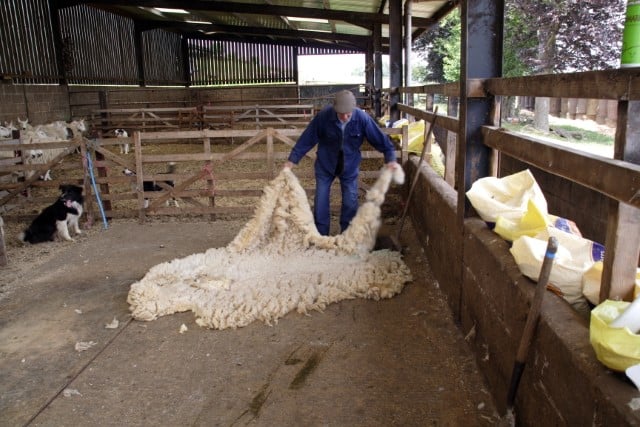
After domestication, shepherds began doing selective breeding to make the animals woollier.
While evidence of sheep wool garments seems to stretch back to 4000 BC, some historians believe that humans may have started making clothing out of wool as far back as 8000 years ago.
The earliest bit of hard evidence of the domestication of wool-bearing sheep in Europe is from 4,000 BC.
Wool was extremely important in the time of the Roman empire. It was even more significant in the Middle Ages.
Wool production was a significant part of Italy’s economy by approximately 1200 AD. In fact, the famous Medici family’s entire fortune was derived from wool production.
Europeans brought sheep to other continents in the Colonial Era. A pivotal moment in wool history was when the British brought sheep to the continent of Australia.
Australia was (and remains) ideal for sheep grazing and wool production. Even today, Australia is the most important country in the wool industry.
How Much Wool Does a Sheep Produce on Average?
Depending on the size of the sheep and its breed, a sheep may produce somewhere between two and 30 pounds of wool every year.
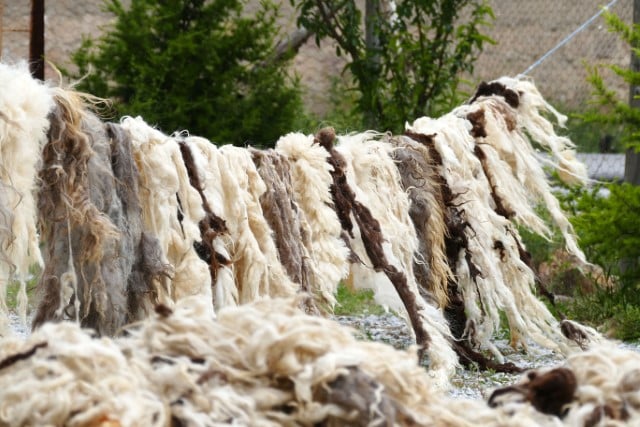
As a single pound of wool can be made into as many as 10 miles of yarn, that is quite a lot of wool.
Statistics for sheep raised in the United States show that the average weight of the fleece harvested from a sheep is more than seven pounds.
This figure varies between states, however.
Nevada’s average fleece weight is 9.8 pounds. In North Carolina, on the other hand, it’s only 5 pounds.
What Happens to Wool After Shearing?
After wool has been sheared from the sheep, it must be cleaned, processed (including carding), and spun into yarn.
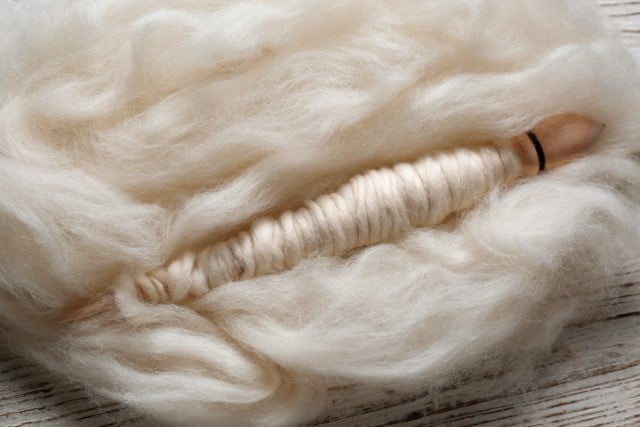
This can be a labor-intensive process, and certain kinds of wool (such as Merino wool) demand even more time and attention.
How is Wool Processed?
There are two main systems to choose from for processing wool and making it into yarn.
- The woolen system
- The worsted system
The Woolen System
With the woolen system, shorter wool fibers are used to create yarns that aren’t as smooth as what you we find in the worsted system.
Some of the types of garments we can make from wool processed with the woolen system include, for example, bulky sweaters, cardigans, some kinds of outerwear, and more casual types of clothing.
The Worsted System
The worsted system creates worsted wool yarns with superior smoothness. This, of course, leads to garments with a much smoother look and hand.
This is why worsted wool can be used in men’s suiting, uniforms, higher end sweaters, and even base-layers and underwear.
What Countries Produce The Most Wool?
Below is a chart showing the top 10 countries for wool production. You’ll find out how much wool each of them produces annually.
| Country | Annual Wool Production (average) |
|---|---|
| China | China is the top wool producer on the planet, with 471,111 metric tons produced each year. |
| Australia | Australia comes in second, with 360,520 metric tons of wool produced every year. |
| New Zealand | After Australia comes New Zealand, with 165,000 metric tons of wool produced annually. |
| The United Kingdom | The United Kingdom places fourth, with 68,000 metric tons of wool produced each year. |
| Iran | In fifth place is Iran. Iran produces 61,500 metric tons of wool each year. |
| Morocco | Morocco is the sixth largest wool producer, with an average of 56,000 metric tons per year. |
| Sudan | In seventh place is Sudan. This country produces an average of 56,000 metric tons of wool per year. |
| Russia | Russia produces an average of 54,651 metric tons of wool every year. |
| Argentina | Argentina produces an average of 45,000 metric tons each year. |
| India | India is in tenth place when it comes to wool production, with an average of 46,500 metric tons per year. |
Sheep’s Wool is a Versatile Fiber
It’s clear that the wool we harvest from sheep is a versatile and important fiber all over the world.
Find out about the different kinds of wool available before deciding which one is best for you, and while you’re here, you may enjoy learning about some of the sheep breeds prized for wool production.

